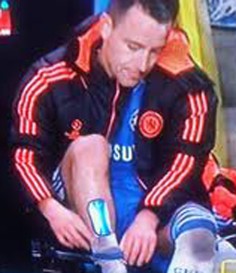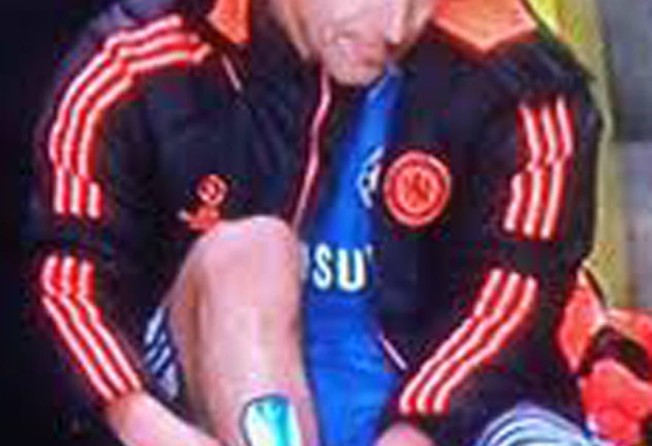
Shin guards must protect the legs
Any player who has suffered, or seen, a severe injury would realise the importance of these items of gear

Like soccer players, shin pads come in all shapes, sizes and prices. And just like players, these guards vary widely in their stature, effectiveness and value for money.
Therefore, have you ever stopped to think about the level of protection that "shinnies" provide? How well do shin guards protect our lower leg bones? They were first introduced to soccer in 1874 when Sam Weller Widdowson took his cue from cricket and cut down his cricket pads to cover his shins.

Others following in his footsteps were ridiculed for being "soft" by supposedly "hard" men. It took more than 115 years for the game's guardians to eventually see sense. It was only in 1990 that Fifa made the wearing of shin guards mandatory.
But even today, it is incredible that so many players detest wearing them and will use any excuse to go without. In Hong Kong's recreation leagues and many informal events like seven-a-side or five-a-side competitions, many players choose to go without. It is usually players from South America or Africa who regularly forget to put on shin guards. In official leagues where the rules are applied more stringently, referees will not allow players to participate without wearing the proper equipment.
Players who shun shin guards have probably never seen or experienced an horrific double fracture of the lower leg. If they did, the memory would instantly convert them. Unfortunately, match officials see their fair share of horror injuries on the field of play.
Rational Ref saw one first hand last December during the charity five-a-side tournament for Operation Santa Claus. As an attacker dashed towards goal, the goalkeeper made a 50-50 challenge for the ball. The players' legs made contact and there was a sickening crunch.
The attacker had no shin guards and, because his socks were not rolled up, his bones were clearly visible through the skin. The goalkeeper, who was wearing shin guards, walked away unscathed. Fortunately, the injured player has now recovered from his broken leg. Rational Ref reckons he will never again play without shin guards.
If more players see such gruesome consequences, they might take the guards more seriously and perhaps invest in a pair that provide good protection.
The laws state that shin guards are made of "rubber, plastic or a similar suitable material" and must "provide a reasonable amount of protection".
The trouble is that the laws offer no guidelines about the size or shape of shin protectors, or what actually constitutes a reasonable amount of protection.
At the moment, the materials used in shin guards appears to be the only factor that Fifa recognises in helping to determine the value of what is or is not "reasonable protection".
For instance, the use of cardboard as shin guards is considered unreasonable at one end of the hardness scale, just as the use of stainless steel is unreasonable at the other end.
Presumably guards made of materials that fall between these extremes are considered reasonable, because they offer protective and shock-absorbing properties as well as being lightweight and comfortable.
Hence standard shin pads are usually cheap thermoplastic and have a thin layer of ethylene vinyl acetate or other foam material to act as shock absorbers. Any material will do, with the minimum being that they are made of cheap plastic costing at least HK$100.
Looking more closely at the assortment of shin guards that professional players wear, it is clear that size is unregulated and unimportant. Unlike the type of material, the size of the guard does not appear to concern Fifa.
There are some players who prefer to wear tiny pieces of plastic, which obviously do not provide adequate protection. Chelsea captain John Terry is one example of a player who defies good sense by wearing pathetically petite pads.
The majority of players wear standard sized shinnies that range from 12-18cm. But considering the adult lower leg is 30cm and longer, the total area that a shin pad supposedly protects is woeful.
Only a few players wear the most expensive and most protective guards, which are the Diadora Totti Mondiali with a price tag of £150 (HK$1,800). These 25cm-long protectors are made of titanium fibre and Kevlar, which is similar to that used in Formula One racing cars. Italian Francesco Totti wore them during the 2006 World Cup, for physical protection as well as for psychological support, following his recovery from a nasty fracture in his lower leg.
Rational Ref reckons it is about time size relative to a player's lower leg size should be a consideration.
The simple laws of physics tells us that, for shin guards of the same material, the larger the surface area they cover the more protection they offer both in terms of the total area of protective coverage and in terms of the dissipation and distribution of the incoming force.
Basically, the larger the shin guards relative to the length of a player's lower leg, the better the odds in favour of protection. For safety's sake referees, players, coaches and spectators should be made aware of this.
Agree or disagree? Contact Rational Ref at [email protected]